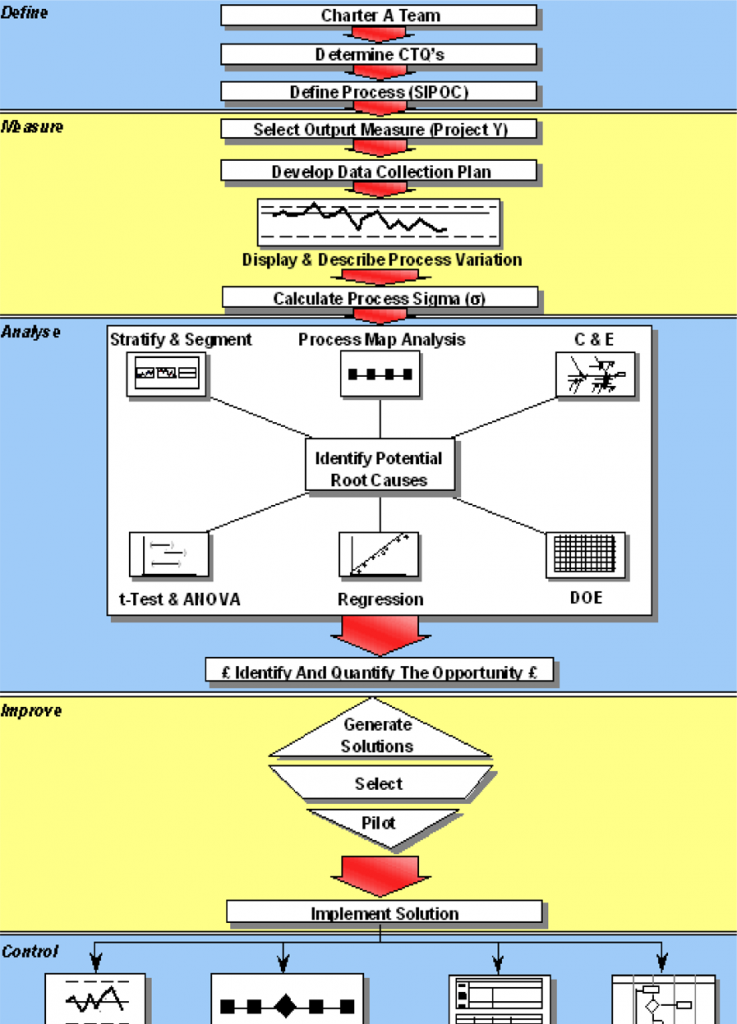What is Lean Six Sigma
Lean Six Sigma is not just a collection of tools, but an integrated continuous improvement methodology aimed at delivering defect-free products and services — as well as producing value for the customer as efficiently as possible.
The Lean Six Sigma methodology is a merger of two distinct but complementary methodologies—Lean and Six Sigma. Lean is based on Toyota’s production system and has been developed into a Lean set of principles that have been widely applied in both manufacturing and service businesses. Six Sigma was developed by Motorola in the late 1980’s initially to improve product quality and has also been widely applied in manufacturing and service organizations.

Lean Six Sigma is rigorous adherence to proven methodologies, tools and techniques that will enable a business leader to confidently solve process problems using data-driven approaches so that the problems stay solved.
The Belt structure for skills development
Any Lean Six Sigma effort will require the efforts and participation of people – they may be the ones that identify the problem in the first place, they may help to collect the data or they may be the ones that make/break the solutions and in that capacity effective people management and change management is a key principle of Lean Six Sigma
- Yellow Belt
- Green Belt
- Black Belt
- Master Black Belt
Lean Six Sigma is normally executed by professionals known as Yellow Belts, Green Belts, Black Belts and Master Black Belts – terms created originally by Motorola. Each level has increasingly greater mastery of the skill set and roles and responsibilities also grow from each level to the next.
Lean Six Sigma certification equips you with business process improvement skills to take on greater responsibility to effectively engage with others and successfully implement business improvement and change projects.






